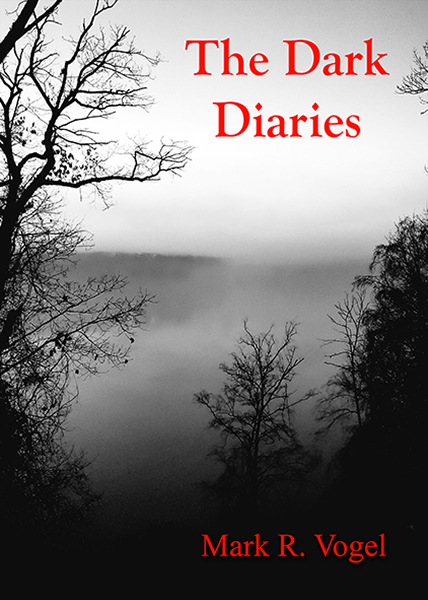There is a reason that Andrew Douglas’s redux of Stuart Rosenberg’s The Amityville Horror was not screened for critics: It is sadly similar to Zack Snyder’s remake of George Romero’s Dawn of the Dead in that neither director understands the social allegory involved with their predecessor’s work. Snyder not only misses Romero’s satirical agenda, he inadvertently presents the converse: Consumer glamorization. The only thing which can be graciously lodged in respect to Douglas’s effort is that he haphazardly eschews Rosenberg’s allegory of homeownership and merely fails to fill the void where substance once resided.
A large portion of the problem with the 2005 rendition of The Amityville Horror is not that the production was left to a first time feature-length director, but that the responsibility for the script’s revision was granted to Scott Kosar. Kosar’s Achilles’ Heel is twofold: One, he does not house a working conception of the nature of horror. In an interview, he states that “[ . . . ] looking back at it [the Amityville story] 25 years later, I realize that there are conventions that were in the book and portrayed in the movie that just don’t hold up anymore, they’re just not that scary. You know, possessed pigs and black goo coming up from the toilet and green goo leaking from the walls isn’t going to scare people in today’s world, so a lot of that needed to be reinvented.” Of course, this all but admits that the screenwriter does not appreciate the parable which Rosenberg established in the original wherein each catastrophe which befell 112 Ocean Drive compounds the woes of its mortgage-laden owners. Moreover, Kosar’s statement serves as testament that, in lieu of the genre being inundated with ax-welding psychopaths to the point of yawn-inducing saturation, he nevertheless concludes that the nightmarishly freaky image of a demonic pig possesses no capacity to unnerve an audience. Two, Kosar, with the aide of everyone involved in the production, attempts to mimic their own success with Marcus Nispel’s revisioning of Tobe Hooper’s The Texas Chain Saw Massacre and, in so doing, never bothers to question whether the same aesthetic approach used to revive a cannibalistic Texas family applies to a Long Island haunted house. Perplexingly, the film only gets worse.
Douglas retains the period in which Rosenberg’s film is set, thereby implying that the notion of the failed American Dream only pertains to the 1970s and, ergo, such a nightmare would break the rope upon which our disbelief hangs because, apparently, three stepchildren, multiple mortgages, restoration and repair bills, and marriage woes are a thing of the past. It does not help matters that the D.O.A. project serves, not only as irrefutable proof that the cinematic puppeteers are caught in their own strings, but is a vehicle for Ryan Reynolds to repeatedly display his hot, hot, (did I mention hot?), body time and time and time again. (Is this meant to imply that we are to fear our pretty boy’s ensuing demise, thus no eye candy to be had?) But then there’s his acting . . .
The character of George Lutz is one in which the pressures surrounding him slowly aggregate to a level in which the paterfamilias takes his stress out upon his family. The key term is “slowly,” which the rushed feature–replete with MTV-style editing; time markers which are arbitrarily implemented as opposed to stationed as time-constricting, claustrophobic signposts; instantaneous insect infestations; and lack of establishing shots–guiltlessly dismisses. Perhaps this is due to the fact that Reynolds does not have the ability to convincingly render a gradual psychological transformation or is merely a consequence of a poorly crafted script, but nonetheless, the actor’s trademark pithy retorts which work well in his comedies are sadly misplaced in a horror film as they erroneously function as a release value on a pressure gauge which should, especially considering the work’s brief running time, be allowed to perpetually build for optimum effect by feature’s close. Yet Douglas still makes time to include the arbitrary back story . . .
Which brings us to the portrait of George proper. Given Rosenberg’s original premise, the interpretative potentiality to be had with whether or not his central character is insane or merely the victim of a haunted abode is usurped in order for the filmmaker to masterfully bring to light his sociological examination of the stresses of homeownership. Considering Douglas ignores this narrative angle entirely, this affords the director the opportunity to engage in reflective narrative fisticuffs with his viewer yet, alas, George is mad. Ope, wait, no . . . no he’s not, despite the fact that the original’s saving grace in respect to the mental status of the character occurs when George returns to save the family dog. Conversely, in Douglas’s confused labyrinth of a horror movie, madmen kill canines believing them to be demons before, thankfully, becoming instantaneously clear-eyed once more, just in time to rush safely off into the sunset with his pesky stepchildren, distraught wife (Melissa George), and 80K-plus-interest in losses. Granted, we question the character’s sanity when we see him nailing, nailing mind you, sheetrock but, predictably, in a Uwe Boll, er, Andrew Douglas world, this is more than plausible considering that George can add firewood to the furnace and close the door with his bare hands . . . .
In the original, as in Douglas’s version of the tale, a babysitter is presented. In the former, the figure evokes heart-wrenching pity from the audience as her braces-clad face vainly attempts to produce a Edvard Munch-cry as she tries to escape the confines of a locked closet. In the latter, all sympathy is removed as the teenage nanny becomes a super sexy, dope smoking pederast who merely gets her just desserts, which is par for a horror film which houses a doorknob with a cross bas-relief that, conveniently, turns 180-degrees . . .
In most every respect, Andrew Douglas’s “reimagining” of Stuart Rosenberg’s The Amityville Horror is too cute for its own good. Few films–even the lazy rehash of a previous outing, be it sequel or remake–misstep as consistently, proving once again that Hollywood’s belief that a premise which has proven effective in the past cannot be misconstrued, raped, and sugarcoated into the latest cinematic abomination yearning to do the same to its viewer. The only justice to be had with such productions is the knowledge that the money saved by such companies due to the fact that they already own the rights to the title, are left holding the pile of feces which they have created.
-Egregious Gurnow
- Interview with J.R. Bookwalter - January 22, 2015
- Interview with Andrew J. Rausch - January 22, 2015
- Interview with Rick Popko and Dan West - January 22, 2015
- Interview with Director Stevan Mena (Malevolence) - January 22, 2015
- Interview with Screenwriter Jeffery Reddick (Day of the Dead 2007) - January 22, 2015
- Teleconference interview with Mick Garris (Masters of Horror) - January 22, 2015
- A Day at the Morgue with Corri English (Unrest) - January 22, 2015
- Interview with Writer/Director Nacho Cerda (The Abandoned, Aftermath) - January 22, 2015
- Interview with Actress Thora Birch (Dark Corners, The Hole, American Beauty) - January 22, 2015
- Interview with Actor Jason Behr, Plus Skinwalkers Press Coverage - January 22, 2015


